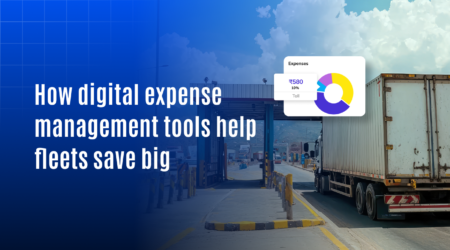How is fleet tracking in Italy benefiting multiple industries?

Italy’s transport and logistics ecosystem is entering a new phase of modernization. According to Statista, the Italian transport market is projected to grow from USD 52.78 billion in 2025 to over USD 69.74 billion by 2030, driven by EU recovery plans, infrastructure investments, and urban development. This rapid transformation is putting pressure on industries to digitize their fleet operations. From construction and cold chain logistics to municipal waste transport, businesses are now expected to meet stricter sustainability mandates, reduce operational inefficiencies, and ensure route-level compliance. For system integrators and B2B partners, this shift presents a unique opportunity: to offer GPS fleet tracking solutions that solve real-world regulatory and efficiency problems across Italy’s core sectors.
This blog explores how fleet tracking is benefiting multiple industries in Italy and how businesses can use this momentum to offer smarter, compliant, and scalable solutions.
The digital shift in Italy’s construction and municipal fleets
Construction and municipal fleet operators in Italy are rethinking how they manage vehicles, jobs, and route accountability. Rising fuel costs, tighter environmental regulations, and public demand for cleaner operations are pushing these sectors to adopt digital tools.
Construction fleets are embracing control and clarity
Construction companies across Italy manage complex projects with scattered teams and heavy equipment. Without visibility, delays and cost overruns become common.
With growing focus on sustainability and EU-funded developments, digital tracking is becoming a critical tool for construction players to stay competitive.
Municipal fleets need smarter, cleaner operations
Cities and public contractors face rising pressure to reduce waste, emissions, and inefficiencies in daily operations. Fleet tracking helps turn these goals into reality.
Many municipalities are preparing for Italy’s new electronic waste and emissions tracking systems. With GPS tracking, local bodies can collect the data they need without extra manual effort.
Cold chain and time-sensitive transport
Cold chain fleets in Italy transport sensitive goods that depend on both precise routing and consistent temperature control. Fleet tracking now supports these demands with alerts, live status, and audit-ready data.
Real-time visibility supports high-value deliveries
Whether transporting food, medicine, or lab materials, cold chain fleets now operate under strict timelines and transport protocols.
This reduces the risk of spoilage and missed delivery windows, both of which directly affect revenue and client trust.
Supporting compliance with temperature and route logs
Many industries in Italy are subject to new digital recordkeeping standards, including pharma logistics and food safety. Regulatory audits often require proof of both temperature consistency and route adherence.
System integrators can offer bundled GPS solutions with optional temperature monitoring, creating value-added services that are simple for fleet clients to adopt.
Need for GPS tracking and geofencing for compliance and control
Italy is tightening its regulations around vehicle tracking, especially in waste transport and public-sector logistics. What began as a legal requirement is now helping companies unlock operational benefits across the board.
Meeting legal mandates with smart tools
From hazardous waste routes to public collection contracts, many fleets in Italy are now required to log real-time locations and maintain route-level proof of activity.
GPS tracking helps fulfill these mandates by:
- Logging each trip and stop in a digital, verifiable format
- Offering timestamped data for audits and reporting
- Reducing paperwork and manual documentation errors
For system integrators, this creates a growing demand for ready-to-deploy software solutions that can help clients stay compliant without adding overhead.
Turning geofencing into a business advantage
Geofencing allows fleet managers to draw virtual boundaries on the map around zones, job sites, or restricted areas. Once set up, every entry and exit gets tracked automatically.
In regulated areas, geofencing helps companies stay within assigned zones while gaining tighter control over operations.
Conclusion: The rising demand for fleet tracking in Italy
Italy’s shift toward digital fleet management is not limited to one sector. Construction companies, municipal fleets, and cold chain operators are all feeling the impact of stricter mandates, rising operational pressure, and the growing need for real-time data.
Fleet tracking in Italy has become challenging; the fleet management software is the solution. It improves visibility, ensures route-level compliance, and helps companies move away from manual processes. For businesses managing aging fleets or complex logistics, the right tracking tools offer both control and cost-saving potential.
This transition also opens new opportunities for system integrators, GPS hardware providers, and solution partners. As more industries look for flexible and compliance-ready platforms, offering fleet tracking in Italy is no longer just an add-on it is a growth strategy.








